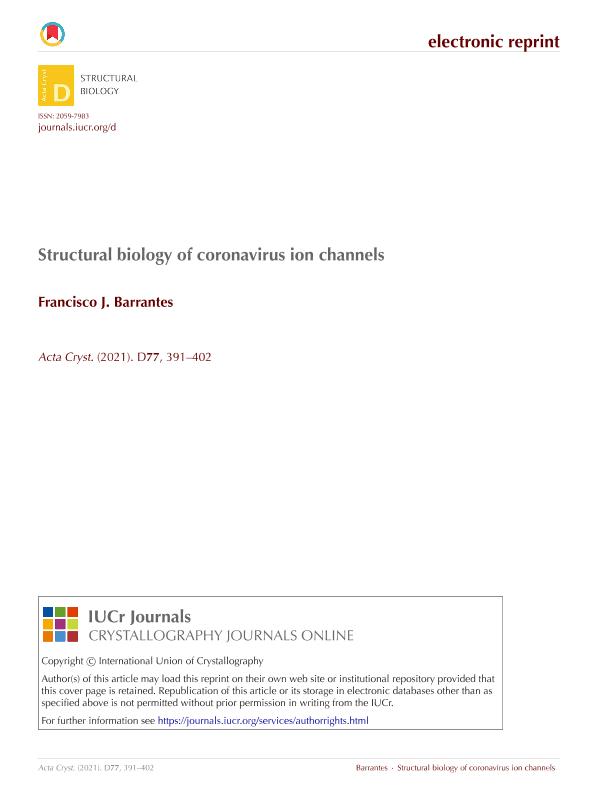Artículo
Structural biology of coronavirus ion channels
Fecha de publicación:
04/2021
Editorial:
International Union of Crystallography
Revista:
Acta Crystallographica Section D: Structural Biology
ISSN:
2059-7983
Idioma:
Inglés
Tipo de recurso:
Artículo publicado
Clasificación temática:
Resumen
Viral infection compromises specific organelles of the cell and readdresses its functional resources to satisfy the needs of the invading body. Around 70% of the coronavirus positive-sense single-stranded RNA encodes proteins involved in replication, and these viruses essentially take over the biosynthetic and transport mechanisms to ensure the efficient replication of their genome and trafficking of their virions. Some coronaviruses encode genes for ion-channel proteins - the envelope protein E (orf4a), orf3a and orf8 - which they successfully employ to take control of the endoplasmic reticulum-Golgi complex intermediate compartment or ERGIC. The E protein, which is one of the four structural proteins of SARS-CoV-2 and other coronaviruses, assembles its transmembrane protomers into homopentameric channels with mild cationic selectivity. Orf3a forms homodimers and homotetramers. Both carry a PDZ-binding domain, lending them the versatility to interact with more than 400 target proteins in infected host cells. Orf8 is a very short 29-amino-acid single-passage transmembrane peptide that forms cation-selective channels when assembled in lipid bilayers. This review addresses the contribution of biophysical and structural biology approaches that unravel different facets of coronavirus ion channels, their effects on the cellular machinery of infected cells and some structure-functional correlations with ion channels of higher organisms.
Archivos asociados
Licencia
Identificadores
Colecciones
Articulos(BIOMED)
Articulos de INSTITUTO DE INVESTIGACIONES BIOMEDICAS
Articulos de INSTITUTO DE INVESTIGACIONES BIOMEDICAS
Citación
Barrantes, Francisco Jose; Structural biology of coronavirus ion channels; International Union of Crystallography; Acta Crystallographica Section D: Structural Biology; 77; 4-2021; 391-402
Compartir
Altmétricas




